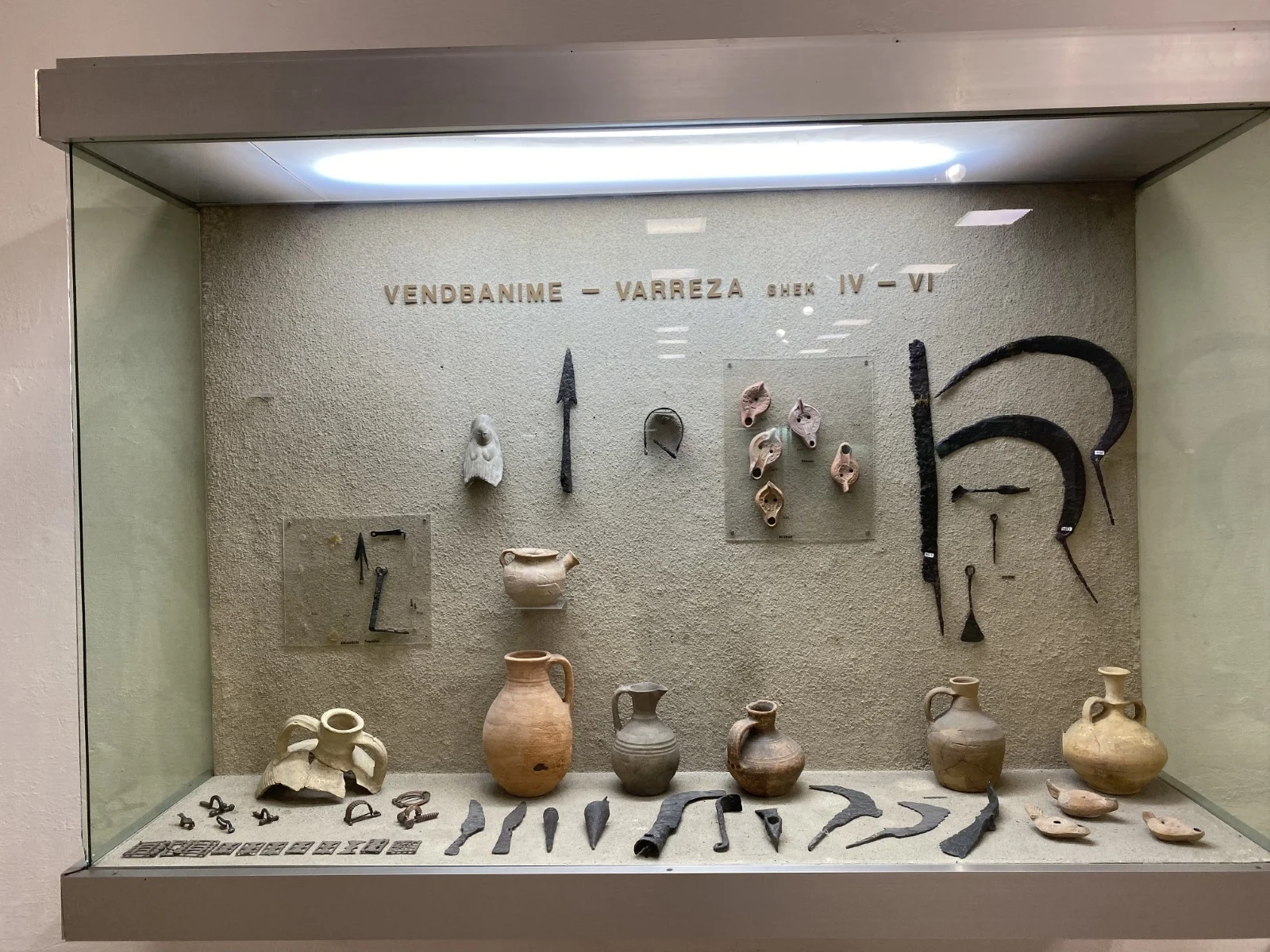Introduction
The Tirana National Archaeological Museum is not only Albania’s foremost institution dedicated to its archaeological heritage but a vital symbol of its ancient history. Situated in the heart of Tirana, this museum plays a crucial role in preserving the past for future generations. It serves as a window into the diverse cultures that have shaped Albania through centuries. By showcasing an extensive range of artifacts, the museum not only preserves the remnants of Albania’s past but also educates visitors about the rich tapestry of civilizations that have existed in the region.
Albania’s ancient history is brought to life within the museum’s walls, providing insights into the country’s development from prehistoric times through the Byzantine era. The significance of the museum extends beyond preserving artifacts; it actively engages the public in understanding and appreciating Albania’s complex cultural narratives. The museum’s commitment to education is supported by research, as noted in the journal article “Challenges Facing Albanian Archaeological Heritage”. This research emphasizes the museum’s role in fostering a deeper understanding of the nation’s archaeological past, highlighting its importance in both national identity and international cultural discourse.
Overview of the Tirana National Archaeological Museum
The Tirana National Archaeological Museum is strategically located in the heart of Tirana, Albania’s bustling capital, making it conveniently accessible to both locals and tourists. Nestled near Skanderbeg Square, the museum is at the center of Tirana’s cultural and historical district, within walking distance of other key attractions. Visitors can easily reach the museum via public transportation or taxi, providing a seamless cultural excursion for anyone eager to explore Albania’s rich history. As one of the most prominent cultural landmarks in the country, its location in Tirana plays a critical role in ensuring that Albania’s archaeological treasures are accessible to a broad audience, enhancing the city’s status as a hub of cultural and historical learning.
The museum was founded in 1948, shortly after World War II, during a period when preserving and studying the nation’s heritage became a paramount objective. From its inception, the museum aimed to collect, preserve, and study Albania’s archaeological finds comprehensively. Over the years, it has expanded its collection and developed a reputation for excellence in archaeological study and education. Today, it stands as a testament to Albania’s dedication to preserving and understanding its cultural roots, a goal that resonates with both domestic and international visitors interested in the archaeological narrative of the Balkans.
Housed in a building characterized by Soviet-era architecture, the Tirana National Archaeological Museum offers visitors spacious exhibition halls designed to showcase a wide range of exhibits. The architectural style, functional and robust, reflects the period’s utilitarian design ethos, focusing on accessibility and functionality. Inside, the museum boasts an array of spacious galleries and well-organized display areas that provide the visitor with an immersive experience. These facilities not only accommodate many treasures from Albania’s past but also provide a comfortable environment for learning and reflection. The museum’s setting and facilities underscore its role as a guardian of history, offering visitors a unique lens into the nations and cultures that shaped Albania.
Collections and Exhibits
The tree of Albania’s extensive and varied cultures is deeply rooted in the archaeological periods represented at the Tirana National Archaeological Museum. The exhibits, carefully curated, reflect the museum’s commitment to showcasing the developmental trajectory of Albanian and Balkan civilizations from prehistoric times through Illyrian, Roman, and Byzantine periods. These key archaeological periods unveil the evolution of societal structures, technological advancements, and cultural developments that have shaped modern Albania.
- Prehistoric Collection:
The prehistoric collection includes tools and pottery that date from the Paleolithic to the Bronze Age. It offers insights into early human settlements in the region, depicting everyday life, survival tactics, and cultural practices that laid the foundations for later societies. - Illyrian Artifacts:
The museum’s significant Illyrian section showcases a collection of weaponry, jewelry, and burial artifacts. These exhibits illustrate the unique cultural aspects of ancient Illyrians, revealing their social structures, crafts, and interactions with neighboring civilizations. - Roman and Byzantine Collections:
The Roman period includes treasures such as mosaics and sculptures that illustrate Albania’s vital role in the Roman Empire. Meanwhile, artifacts from the Byzantine era highlight the region’s transition through religious and administrative changes that continued to shape its cultural landscape.
The museum’s artifacts exemplify Albania’s rich historical tapestry, offering a glimpse into everyday life thousands of years ago. Visitors encounter ancient tools, expertly crafted pottery, exquisite jewelry pieces, and sculptures that narrate tales of skill, trade, and artistry inherent in these ancient cultures. Key pieces, such as the statue of Apollonia and mosaics from renowned archaeological sites, serve as invaluable cultural ambassadors, inviting observers to delve into the aesthetics and craftsmanship of ancient societies.
A defining feature of the museum is its special collections and notable exhibitions. These highlight unique cultural narratives that are specific to Albania, such as the Illyrian helmets and the extensive display of Roman artworks and mosaics. Each collection has been meticulously assembled to convey the diversity and complexity of Albania’s cultural evolution.
To enhance visitor engagement, particularly for younger audiences, the museum incorporates educational displays and interactive elements. These features are designed to make the visitor’s experience educational, engaging, and memorable. Multilingual signage in Albanian, English, and Italian caters to international visitors, while interactive displays provide tactile opportunities for learning, bringing the museum’s exhibits to life.
Importance of the Museum in Albanian Cultural Heritage
The Tirana National Archaeological Museum plays an indispensable role in the preservation of Albania’s rich archaeological finds and cultural heritage. It ensures that these invaluable pieces of history are well-maintained and accessible for educational and research purposes. As a central repository for artifacts, the museum provides both the public and scholars with opportunities to explore and understand Albania’s historical significance in the context of global human development.
Equally important is the museum’s collaboration with local and international archaeologists on various research projects. These partnerships extend its impact beyond its immediate enclave, contributing significantly to major archaeological sites across Albania. Collaborative efforts with institutions like the Institute of Archaeology in Tirana have led to deepened studies and excavations at pivotal sites such as Butrint and Apollonia, unearthing layers of history that continue to inform Albania’s national narrative and cultural self-concept.
The museum’s commitment to research efforts has also helped promote public awareness and understanding of Albania’s heritage. Through robust research programs and collaboration with the Albanian Ministry of Culture, the museum nurtures public appreciation for Albania’s intricate past. These educational initiatives reinforce the museum’s role as a respected authority on cultural heritage and a distinguished facilitator of knowledge.
The ongoing research efforts and dynamic exhibitions push the envelope in making history tangible to both local communities and tourists from around the globe. Through its preservation efforts, collaborations with archaeologists, and a strong research arm, the museum serves as a bridge connecting the present with ancient civilizations, fostering an informed appreciation that transcends geographical boundaries.
Visiting Information
Planning a trip to Albania? Knowing the visiting hours and practical details can make your experience much smoother. The museum is open from Tuesday through Sunday, 9:00 AM to 2:00 PM. Admission costs 500 Lek for adults and 250 Lek for students, making it an affordable cultural outing for families and individuals.
Tips for Tourists:
- Guided Tours: To get the most out of your visit, consider booking a guided tour. Available in English, Albanian, and Italian, these tours offer expert insights and contextual stories. Early booking during peak seasons is recommended.
- Best Timing: Start early to avoid crowds, especially on weekends. Visiting in the morning offers a quieter, more relaxed experience.
- Nearby Attractions: Located close to Skanderbeg Square, the museum makes a perfect stop before exploring other sites like the National Historical Museum. A full day in Tirana can be spent discovering its vibrant history and culture.
Accessibility: The museum strives to accommodate all visitors. While some features of the historic building may pose challenges, staff are available to assist visitors with disabilities. Facilities such as restrooms and a gift shop make the visit comfortable and convenient.
These practical tips will help ensure an enriching experience exploring Albania’s archaeological treasures. Whether you’re a history buff or a curious traveler, visiting the Tirana National Archaeological Museum offers a meaningful journey into Albania’s past.
Conclusion
The Tirana National Archaeological Museum stands out as a must-visit site for anyone eager to delve into Albania’s rich historical fabric. It remains a beacon of knowledge and cultural preservation in the region. Its extensive collections, engaging exhibits, and educational programs make it an invaluable resource for both scholars and casual visitors alike.
Whether you’re an archaeology enthusiast, a history student, or an inquisitive traveler, a visit to this distinguished museum will deepen your understanding of Albania’s role in shaping Mediterranean history. The museum’s dedication to preserving and showcasing its ancient past encourages lasting appreciation and inspires future generations to value their cultural heritage.
By exploring its halls, visitors connect with the stories of bygone eras and gain a profound respect for the civilization that has thrived here for millennia. The museum’s ongoing efforts to document, study, and present Albania’s archaeological legacy affirm its importance as a guardian of history, welcoming all to explore and learn about the nation’s remarkable journey through time.


0 Comment